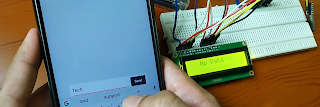Project No. 29: Creating Car Accident Alert System

1. Introduction: In today’s fast-paced world, ensuring road safety is of paramount importance. To address this concern, we present a project that utilizes Arduino, GSM (Global System for Mobile Communications) module, and GPS (Global Positioning System) module to develop a Vehicle Accidents System capable of detecting sudden accidents and promptly notifying authorized individuals for immediate assistance. Our project focuses on leveraging gyroscope and accelerometer sensors in conjunction with Arduino microcontrollers to detect abrupt changes in vehicle motion. These sensors provide precise measurements of angular velocity and linear acceleration, enabling us to identify collision events and classify them as potential accidents. The integration of Arduino, GSM module, and GPS module empowers the system to respond swiftly and efficiently in emergency situations. When an accident is detected, the system triggers a series of actions to notify preconfigured authoriz...


